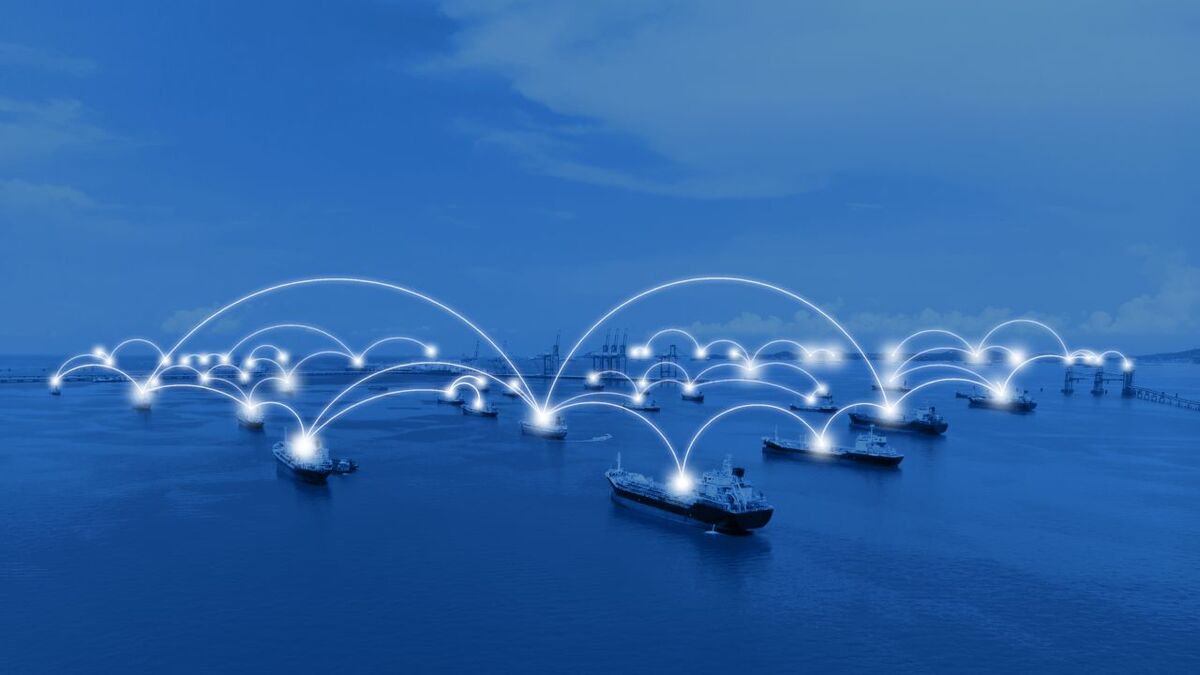The blue economy, encompassing fisheries, aquaculture, shipping, offshore energy, and port logistics, is undergoing one of the fastest transformations in history. Two forces—digitalization y biological innovation—are driving greater efficiency and sustainability across the sector. Yet with these advances comes a new frontier of risk: cyberbiosecurity. This emerging discipline sits at the intersection of cybersecurity and life sciences, addressing vulnerabilities that threaten not only digital infrastructures but also the biological systems tied to ocean industries.
As the maritime world integrates artificial intelligence, genetic data analysis, and automated biosurveillance, the threat landscape grows more complex. Cybercriminals, geopolitical actors, and state-backed hackers are increasingly turning their attention to maritime systems, where the fallout of a successful attack could be catastrophic for trade, food security, and the environment.
Rising Cyber Threats in Maritime Operations
Maritime operations are now prime targets for hostile cyber campaigns. Ports, ships, and logistics networks, which once dealt mainly with physical security, now face the challenge of digital intrusions. According to industry reports, the number of cyber incidents in the shipping sector has risen dramatically in the past decade, with ransomware y malware attacks ranking among the most disruptive.
The consequences extend well beyond financial losses. For instance, when a leading global shipping company suffered a malware attack, damages reached nearly $300 million. Such disruptions do not just affect a single corporation—they reverberate through global supply chains, delaying deliveries, driving up costs, and destabilizing critical trade routes. With more than 90% of global trade moving across oceans, even short-lived disruptions can cascade into worldwide economic shocks.
Port facilities are also under strain. Increasingly reliant on smart logistics, they manage everything from automated cranes to customs clearance through digital networks. A manipulated data system could allow invasive species to slip past biosurveillance, risking coastal ecosystems. To better understand port operations and security, you can explore resources from the World Port Sustainability Program, which highlights how digital innovation and environmental responsibility must go hand in hand.
Aquaculture, Biosurveillance, and Biological Risks
The biological side of the blue economy is equally vulnerable. Modern aquaculture depends on automated feeding systems, genetic monitoringy environmental sensors. A targeted cyberattack could disrupt feeding schedules, corrupt genetic data, or falsify water-quality reports. Such actions could trigger ecological disasters, financial losses for coastal communities, and even food insecurity.
Globally, ransomware in agriculture and food systems is on the rise. Reports indicate that more than 5% of cyber incidents in early 2025 directly targeted food-related industries, a number that has nearly doubled from the previous year. Aquaculture, deeply connected with both global nutrition and regional economies, stands as a particularly attractive target for cybercriminals.
Biosurveillance, another critical function, helps detect pathogens and invasive species in ballast water. But its reliability depends on trustworthy data. Tampered readings could enable ecological threats to spread unchecked, undermining environmental safeguards. For a broader perspective on how biological systems are secured, the Food and Agriculture Organization (FAO) provides valuable insights into aquaculture sustainability and resilience.
Governance, Collaboration, and the Path Forward
To address these growing risks, the maritime sector must rethink governance and technological design. Cybersecurity cannot be an afterthought—it must be integrated into bio-automation systems from the earliest stages. Defense mechanisms retrofitted after deployment are often costly, inefficient, and too late to prevent major damage.
Another challenge is human capital. Surveys reveal that nearly 75% of maritime professionals feel existing cybersecurity training is insufficient. This gap leaves ships, ports, and aquaculture operators unprepared for the sophistication of modern cyber threats. Programs like those implemented by the U.S. Coast Guard, requiring mandatory cyber-training, incident reporting, and formal defense plans by 2027, demonstrate how regulation can set new benchmarks for maritime resilience.
International collaboration is equally critical. The oceans know no borders, and neither do digital networks. Transparent incident reporting, shared best practices, and applied research projects such as the Cyber-SHIP Lab in the United Kingdom are paving the way for solutions that strengthen global resilience. To explore global collaboration on maritime safety, visit the International Maritime Organization (IMO), which coordinates regulatory frameworks for shipping worldwide.
Ocean Security in the 21st Century
The blue economy no longer depends solely on the safety of sailors, vessels, and ports. Its security now extends to data integrity, genetic information, bio-databases, and automated systems that sustain the marine environment. In this new era, warships and naval patrols share responsibility with firewalls, encryption protocols, and biosurveillance technologies.
The stakes are enormous. By 2030, the blue economy is expected to add trillions of dollars to the global GDP. But this prosperity can only be realized if cyberbiosecurity is prioritized. Without it, the risks to trade, food systems, and ecological health could far outweigh the benefits.
The transformation ahead requires collaboration among shipbuilders, scientists, regulators, and cybersecurity experts. As the United Nations Ocean Conference underscores, ocean health and maritime innovation are inseparable from global stability. To ensure the future of the blue economy, stakeholders must act decisively, embracing cyberbiosecurity as a central pillar of maritime governance.







